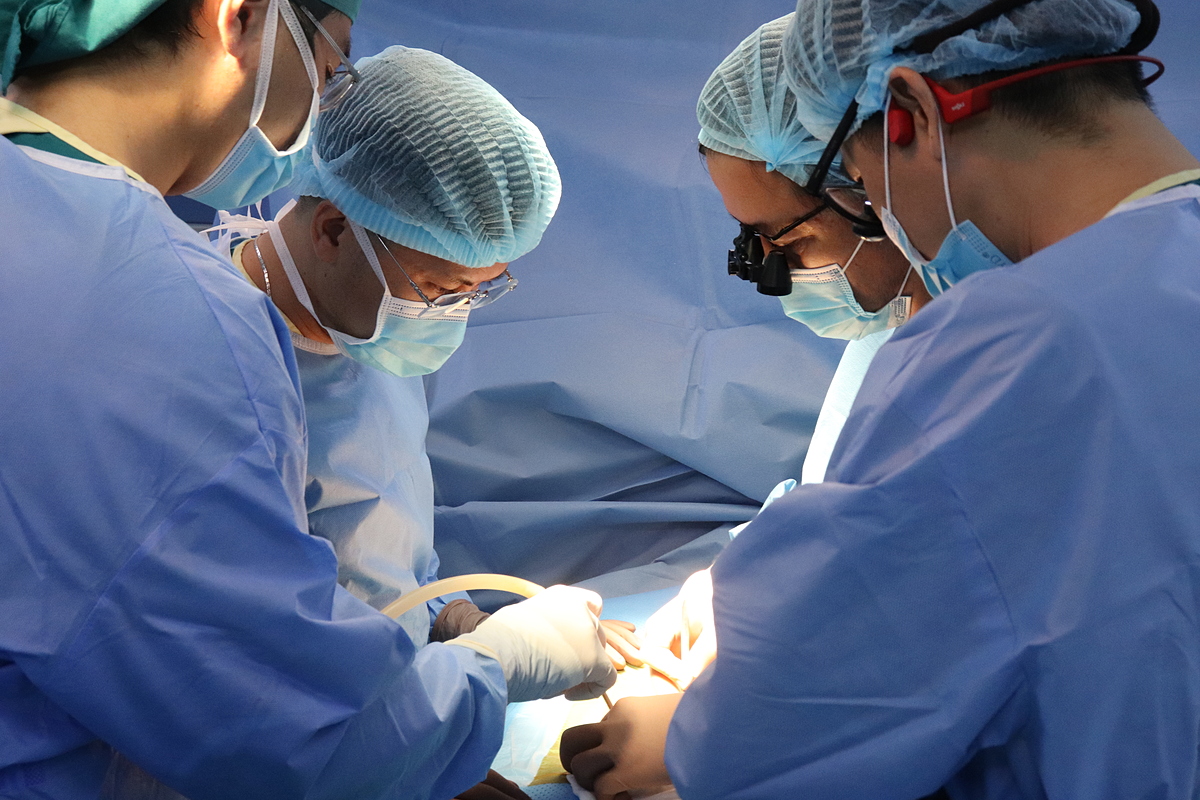The girl first showed symptoms about 5 years ago, experiencing occasional swelling around her eyes upon waking. Her family initially dismissed it as a normal occurrence after crying or sleeping. However, as the swelling worsened, she was brought from Lam Dong to Children's Hospital 2 in Ho Chi Minh City for examination.
Doctors diagnosed her with steroid-resistant nephrotic syndrome caused by a mutation in the Wilms tumor suppressor gene 1 (WT1). This condition made her unresponsive to standard immunosuppressant treatments, leading to end-stage renal failure. For the past several years, she had been undergoing peritoneal dialysis and then regular hemodialysis three times a week at the hospital.
Associate Professor, Doctor Huynh Thi Vu Quynh, Head of the Nephrology and Endocrinology Department at Children's Hospital 2, explained that without a transplant, the girl would require lifelong dialysis. Long-term dialysis increases the risk of cardiovascular complications and poses a life-threatening risk. It also severely impacts quality of life, preventing her from attending school and enjoying activities like other children. The financial burden on her family was also significant, as her parents had to quit their jobs to care for her.
The hospital's transplant council held multiple consultations to assess the risks and develop a detailed surgical plan. The long-term prognosis for kidney transplants varies considerably between children with steroid-resistant nephrotic syndrome who have the WT1 gene mutation and those who do not. On 1/7, the girl received her mother's left kidney, transplanted into her right pelvic cavity. Her own right kidney was completely removed.
Doctor Dang Xuan Vinh, Head of Planning and Synthesis Department at Children's Hospital 2, stated that this was the hospital's first kidney transplant for a child with end-stage renal failure due to this rare WT1 gene mutation. Previous kidney transplant recipients at the hospital did not require complete removal of their own kidneys. In this case, the surgical team simultaneously removed the girl's right kidney and a dysplastic, gonad-like structure on her right side to prevent the risk of cancer in the kidney and gonads due to the gene mutation. The new kidney was then transplanted.
A week after the transplant, the girl is recovering well, eating normally, and is expected to be discharged soon. When she reaches puberty, she will receive testosterone hormone replacement therapy to support the development of secondary sexual characteristics and improve her quality of life.
 |
A child undergoing a kidney transplant at Children's Hospital 2. Photo: Hospital provided |
A child undergoing a kidney transplant at Children's Hospital 2. Photo: Hospital provided
The WT1 gene is a Wilms' tumor suppressor gene, playing a crucial role in the differentiation of gonads from primordial germ cells during fetal development. This gene is also involved in kidney development, and mutations can cause various conditions, including nephrotic syndrome, which can lead to kidney failure. Children with this gene mutation have a higher risk of developing Wilms' tumor and gonadal cancer due to incomplete and dysplastic gonad differentiation.
According to Doctor Pham Ngoc Thach, Deputy Director of Children's Hospital 2, detecting this gene mutation is vital for treating children with steroid-resistant nephrotic syndrome, especially those considering a kidney transplant. Therefore, early genetic testing is recommended for children diagnosed with this condition.
Le Phuong












